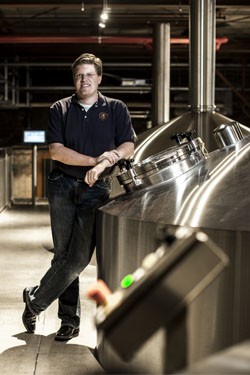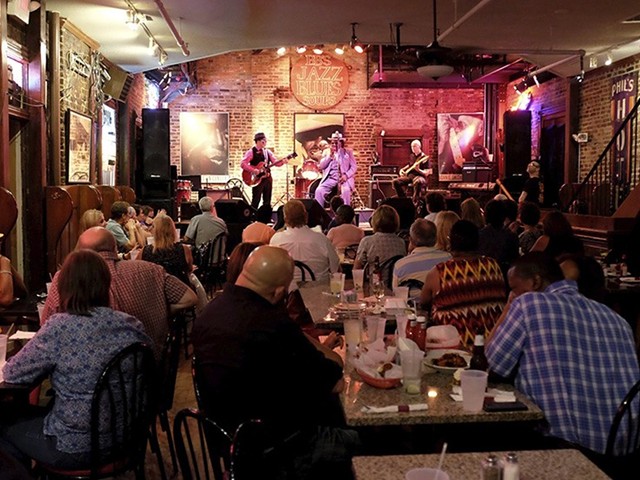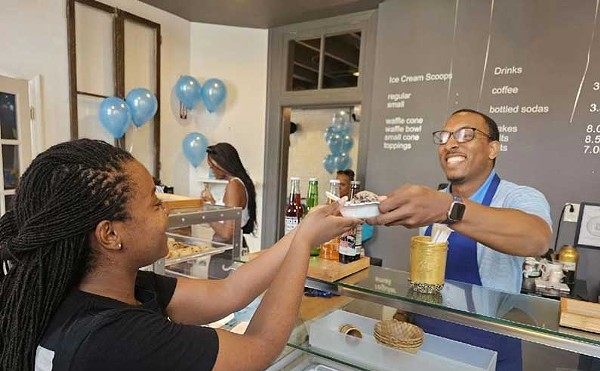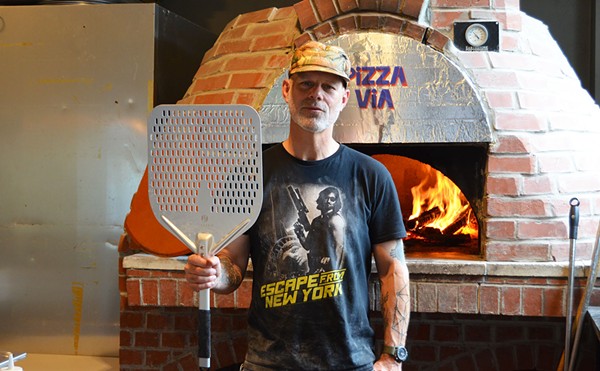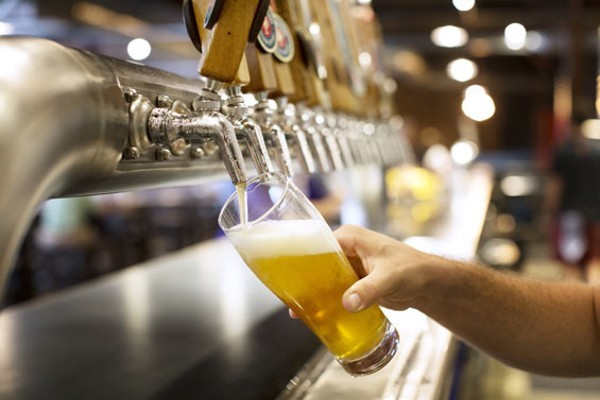
It’s baseball season, and for beer drinkers, that means a Pavlovian thirst for lagers. The connection dates back at least to the 1880s, and more than a century of aggressive marketing has conditioned us to crave suds at the crack of a bat. No matter whether we’re at the ballpark, at the bar or on the couch, a cold, crisp American lager always seems to slake while we root for the home team.
But in recent years, you may have noticed a gradual uptick in gameday options beyond the boring old Bud. Even in Busch Stadium (named after the family once MLB nixed Budweiser Stadium; Busch beer, an allegedly Bavarian-style lager came later), fans can easily find a 4Hands City Wide Pils, a Schlafly White Lager kellerbier or Urban Chestnut’s Musial-commemorating #6 Classic American Lager along the concourse. That’s because independent breweries in St. Louis, like those across the country, are finally trying their hands at brewing lagers.
Make no mistake, the IPA in all its hazy, hoppy, sour, cold, and milkshakey forms is still craft king. But according to Nielsen, between 2019 and 2020 alone, the sale of maltier and more sessionable craft lagers in the U.S. rose by nearly 10 percent. And the style’s upswing is showing no signs of slowing.
“It feels like there is trend toward lagers, definitely,” says Florian Kuplent, brewmaster and co-owner of Urban Chestnut Brewing Company (multiple locations, including 4465 Manchester Avenue, urbanchestnut.com).
If anyone can sense tremors in the lager landscape, it’s Kuplent. Born in Bavaria, he served as a brewer’s apprentice in a tiny German brewery before eventually coming to Anheuser-Busch as staff brewmaster in 2002. In 2010, he left AB to start Urban Chestnut, which has stood for more than a decade as a standard bearer for craft lagers throughout the region. But despite Kuplent’s pedigree, that wasn’t always the intent.
“I didn’t want to limit myself to a certain style of beer,” Kuplent says, pointing to UCBC’s Revolution Series, which featured more experimental styles like the STLIPA and ran parallel with the Reverance Series of more traditional European styles. But the latter has been more popular from jump. “We make more lagers than we make ales, and that was pretty much true from the start,” he says. “Not necessarily by design but because consumers demanded it.”
The reason UCBC’s lagers were so immediately successful might be the same reason so many of Kuplent’s contemporaries opted not to go there for years: Because brewing a consistent, quality lager takes precision and expertise. Unlike ales, which come from yeast that ferments at the top of the brew at warmer temperatures, lagers are bottom fermenters that require colder climes. “If you ferment at lower temperatures, which lagers do, there’s a lot less room for error,” Kuplent says. “You really have to have your process under control to produce a beer that’s good. That’s probably why some smaller breweries just starting out don’t tend to make them.”
The fact that lagers are more focused on core ingredients, especially the malt, with fewer adjuncts and added flavors also means that there are fewer places to hide any flaws in the translucent golden brew. Kuplent already had years of experience at A-B, which many craft brewers begrudgingly admit puts out an incredibly dependable product especially for such a massive scale. Perhaps as a result, Urban Chestnut was able to hit the brew floor running with now-STL-standards like Zwickel, an unfiltered German lager that is naturally cloudy and 100 percent malt-forward; Stammtisch, a traditional pilsner with a slightly bitter finish; and Urban Underdog, an American-style light lager that doesn’t skimp on flavor. Today, these three lagers constitute about 75 percent of UCBC’s total sales.
The early and growing popularity of these beers might also have contributed locally to another reason why Kuplent thinks craft lagers are finally having their day nationally: Beer drinkers have awoken to the fact that watery Budweiser isn’t the end all be all of the style.
“When craft beer first emerged, the best way to differentiate yourself was to make something that wasn’t already on the market,” he says. “Over time, the consumer got educated and tried different things and learned that lagers can actually have some interesting flavors and aromas. A lager doesn’t have to be a beer that doesn’t have any flavor at all. It can still be drinkable and sessionable — but it can also have complexity.”
Sessionability (a made-up word that essentially means you can pound a bunch of them in one drinking “session” and still keep your shit together) is likely the last key element in lager’s recent resurgence. Since these beers are typically half the alcohol content of most modern IPAs, they attract more health- and sobriety-conscious Millennials and Gen-Zers. And two lagers for every IPA also means that barkeeps and breweries can sell more and make twice the money — it’s a win-win.
So this baseball season, when you hear “Here Comes the King,” skip the Bud and reach for a Zwickel or a BirdMan Helles from Modern Brewery or a Civil Life #Carlbock. Or better yet, try all three.
Coming soon: Riverfront Times Daily newsletter. We’ll send you a handful of interesting St. Louis stories every morning. Subscribe now to not miss a thing.Follow us: Google News | NewsBreak | Reddit | Instagram | Facebook | Twitter

